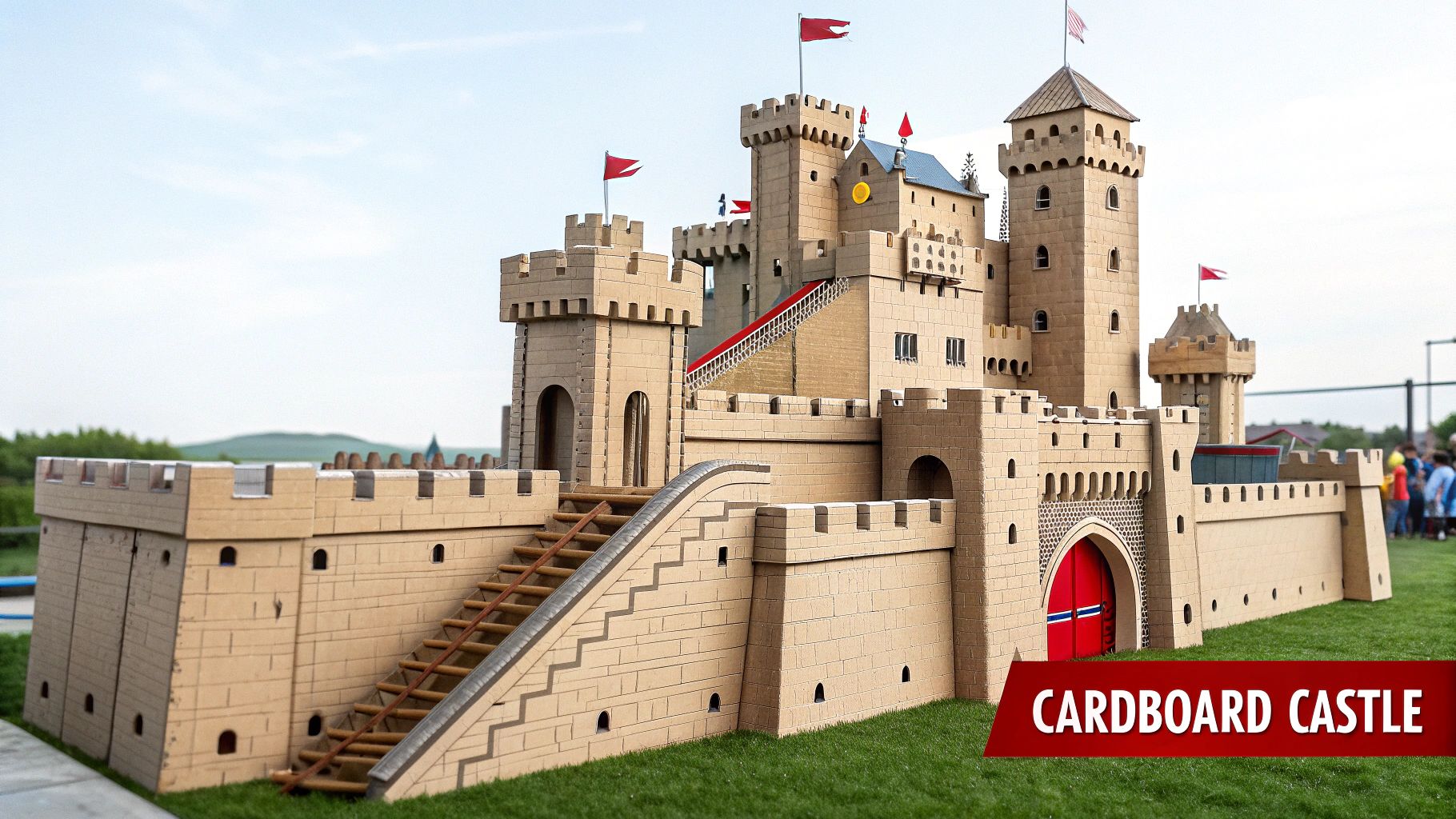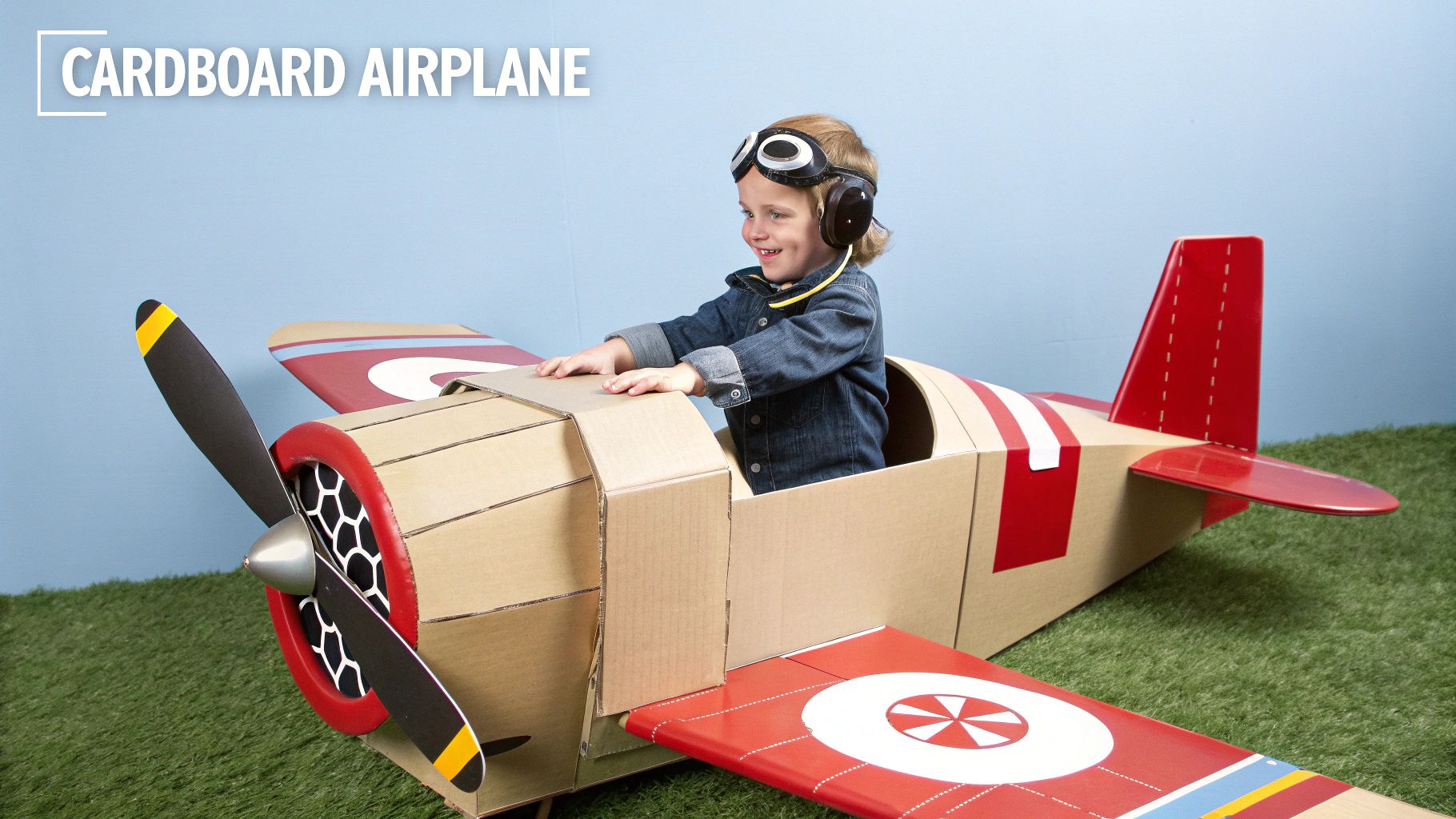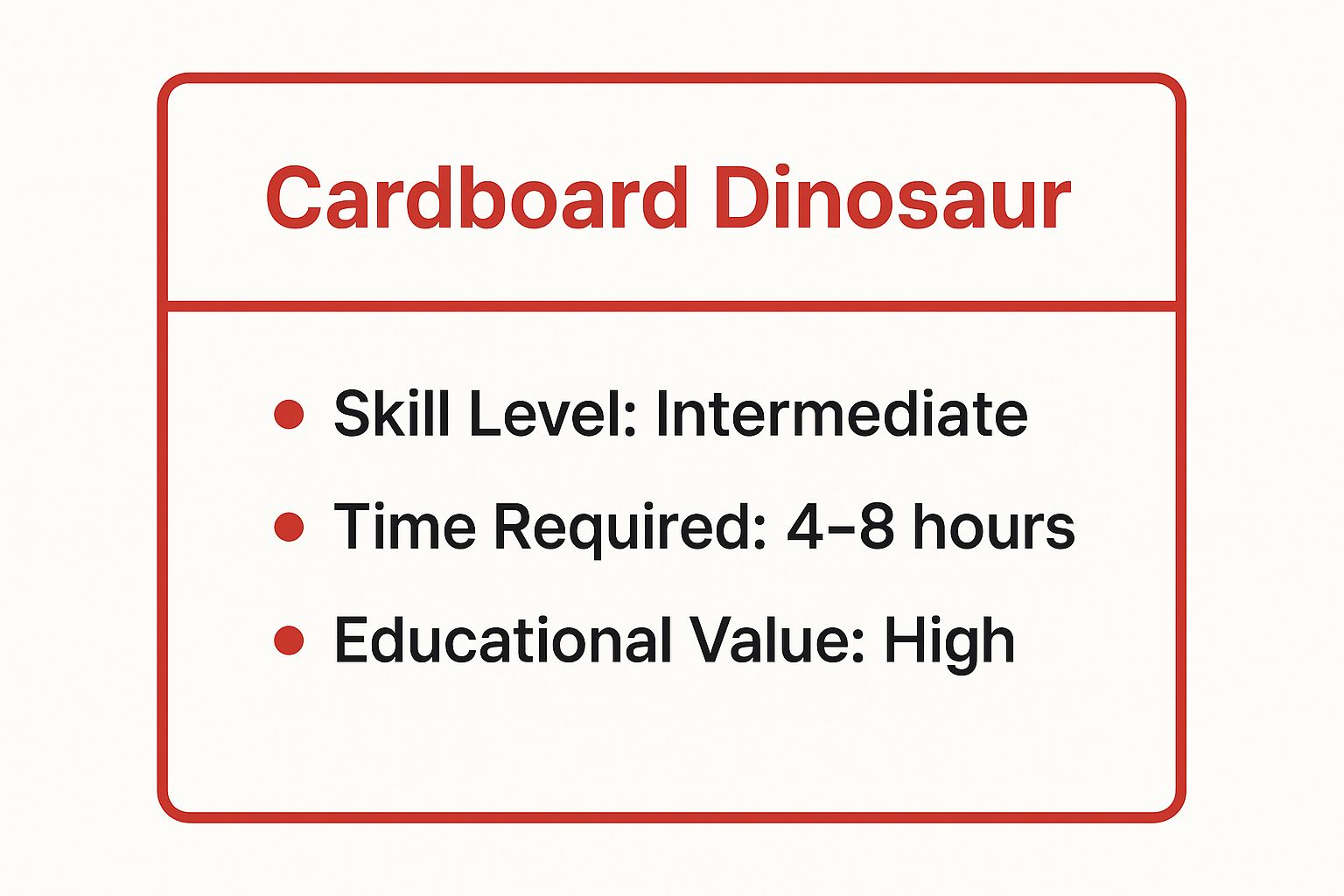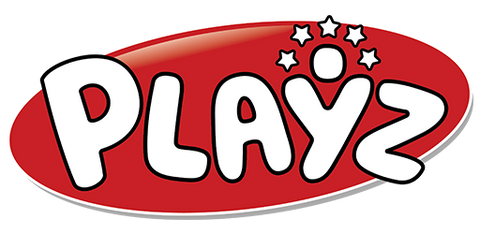
9 Amazing Cardboard Craft Ideas to Spark Creativity in 2025
Welcome to a world where a simple shipping box transforms into a magnificent castle, a futuristic robot, or a high-flying airplane. In an age of digital saturation, turning to hands-on, creative play provides a vital, tactile experience for children. This guide is your ultimate resource, packed with nine incredible cardboard craft ideas designed to minimize screen time and maximize family fun. Forget generic advice; we provide actionable steps, clear material lists, and the educational "why" behind each project.
You will discover how to build everything from a simple, sturdy fortress to more complex creations like a functional marble run. Each idea is structured to be an engaging, shared experience that builds more than just a toy—it builds skills and memories. These projects prove that the best playthings don't always come from a store; sometimes, they come straight from the recycling bin.
This collection of cardboard craft ideas is designed for parents, educators, and anyone looking to spark creativity in children. Let’s start building, one box at a time.
1. Cardboard Castle: Building Your Royal Kingdom
Transforming humble cardboard boxes into a grand, imaginative fortress is one of the most classic cardboard craft ideas for a reason. This large-scale project offers a fantastic opportunity for collaborative play, turning your living room into a medieval kingdom. The basic concept involves using large boxes for the main structure and smaller ones or cardboard tubes for details like towers and battlements.

This project is perfect for a rainy weekend or as a central activity for a themed birthday party. It encourages kids to think about structural design, spatial awareness, and problem-solving as they figure out how to connect walls and support towers.
How to Build Your Fortress: Actionable Steps
Building a sturdy castle requires a bit of planning. Start by gathering various-sized boxes, paper towel tubes, and strong tape.
- Foundation First: Arrange your largest boxes to form the main walls and keep. This establishes the castle's footprint.
- Pre-Cut Openings: Before assembling, use a box cutter (with adult supervision) to cut out windows, arrow slits, and a main gate. It's much easier to do this while the boxes are flat.
- Add Architectural Details: Use cardboard tubes for corner turrets and cut crenellations along the top edges of the walls for an authentic look. A simple drawbridge can be made from a flap of cardboard attached with string.
Educational Benefits: More Than Just a Fort
A cardboard castle isn't just a craft; it's an immersive play environment. It helps develop gross motor skills through building and fine motor skills during decoration. This project nurtures teamwork and planning, making it an excellent educational activity that results in an incredible toy.
2. Cardboard Robot Costume: Inventing a Wearable Wonder
One of the most exciting and personal cardboard craft ideas is building a wearable robot costume. This project takes crafting to the next level by blending creativity with basic engineering, allowing kids to become their own robotic creation. Using a combination of boxes for the body, head, and limbs, this craft transforms everyday materials into a suit of futuristic armor ready for adventure.
This idea is a huge hit for Halloween, school plays, or just an afternoon of high-tech pretend play. It challenges builders to think about ergonomics and movement, figuring out how to construct a costume that is both impressive and comfortable. The process of designing their own character provides a fantastic boost to a child's confidence and problem-solving skills.
How to Build Your Bot: A Practical Guide
Creating a functional robot costume requires careful measurement and assembly. Gather boxes that fit the wearer, along with craft supplies like paint, foil, and bottle caps.
- Body Blueprint: Select a box for the torso that fits comfortably over the wearer's shoulders and another smaller one for the head. Cut holes for the head, arms, and legs.
- Articulated Arms: Use smaller, rectangular boxes or flexible dryer vent tubing for arms and legs. Connect limb sections with brass fasteners (brads) to create moveable joints.
- Futuristic Finish: Spray paint the costume with a metallic silver for a classic robot look. Decorate with bottle caps for dials, foil for panels, and even battery-powered LED lights for glowing eyes.
Educational Benefits: Engineering Imaginative Play
A cardboard robot costume is more than just a dress-up item; it’s an invention that sparks incredible imaginative play. This project introduces basic engineering principles and encourages resourcefulness. Assembling the suit enhances spatial reasoning, and decorating it develops fine motor skills.
3. Cardboard Dollhouse: Crafting a Miniature World
Creating a detailed, multi-room dollhouse is one of the most rewarding cardboard craft ideas for those who love miniatures and storytelling. This project transforms simple materials like cereal boxes and cardboard sheets into a charming, personalized home for dolls and action figures. It’s a craft that allows for incredible attention to detail, from wallpaper and flooring to tiny, handmade furniture.
This project is fantastic for developing patience, precision, and fine motor skills. It encourages imaginative world-building, interior design concepts, and spatial reasoning as children plan the layout and decorate each room. It's an excellent activity for focused, quiet crafting time that results in a long-lasting toy.
How to Build Your Miniature Home: Step-by-Step
Building a beautiful dollhouse is all about the details. Gather medium-sized boxes, craft glue, scissors, and various decorative materials.
- Construct the Frame: Use a sturdy cardboard box as the main structure. Cut away one side to create an open front. Insert flat pieces of cardboard horizontally and vertically to create floors and walls, securing them with hot glue or strong tape.
- Decorate the Interior: Before adding furniture, decorate the rooms. Use scrapbook paper for wallpaper and felt or fabric scraps for carpeting. This adds a realistic and cozy feel.
- Furnish the Rooms: Get creative with furniture. Small boxes can become beds and tables, while bottle caps can serve as plates or stools.
Educational Benefits: Nurturing Creativity and Precision
A cardboard dollhouse is more than a craft; it's a miniature world that fosters storytelling and creativity. Building it enhances fine motor skills, planning abilities, and an understanding of scale and proportion. This project provides a wonderful canvas for self-expression, making it one of many engaging creative learning activities for preschoolers.
4. Cardboard Airplane: Engineering a High-Flying Adventure
Take imaginative play to new heights by crafting a cardboard airplane that kids can actually sit in. This is one of the more ambitious cardboard craft ideas, transforming a large appliance box into a vehicle for endless adventures. From simple, wearable wings to a full-sized cockpit, this project can be tailored to your child's age and your available space.

This craft is an excellent way to introduce basic aeronautical concepts and encourage storytelling. Children can pretend to be pilots navigating stormy skies or explorers discovering new lands, making it a fantastic addition to a classroom learning center or a show-stopping birthday party activity.
How to Build Your Aircraft: A Pilot's Guide
Constructing a plane requires a large box and some creative engineering. Gather a refrigerator or other large appliance box, packing tape, and a box cutter.
- Construct the Fuselage: Use the main box as the body of the plane, or fuselage. Cut out a cockpit opening on the top for your pilot to sit in.
- Attach the Wings: Cut out two large wing shapes from another piece of cardboard. For stability, reinforce them by gluing a second layer of cardboard on top. Cut slots into the fuselage and slide the wings through, securing them with plenty of tape or glue.
- Add Flight Details: Create a propeller from smaller cardboard pieces and attach it to the front with a brass fastener so it can spin. Draw on cockpit controls or glue on bottle caps for buttons and dials.
Educational Benefits: Learning Through Play
A cardboard airplane serves as both a craft project and a long-lasting toy. The building process enhances spatial reasoning and engineering skills as kids figure out how to balance the wings. It fuels imaginative scenarios and boosts creative thinking, making learning about travel and transportation a hands-on, memorable experience.
5. Cardboard Marble Run: A Physics and Engineering Challenge
Creating a DIY marble run is one of the most engaging cardboard craft ideas for budding engineers and physicists. This project involves constructing an intricate network of ramps, tunnels, and drops, transforming simple cardboard tubes and boxes into a dynamic sculpture. It’s an exciting way to explore concepts like gravity, momentum, and cause-and-effect.
This craft is perfect for kids who love to build and experiment. It can be a simple, small-scale track on a piece of cardboard or a massive, room-sized structure attached to a wall. The process of designing, building, and testing the run provides hours of hands-on learning and fun.
How to Engineer Your Track: A Maker's Blueprint
Building a functional marble run requires creativity and a bit of trial and error. Gather cardboard tubes, a large cardboard sheet for a base or a wall, and hot glue or strong tape.
- Start at the Top: Designate a starting point for the marble and begin attaching tubes and ramps, working your way down.
- Vary the Path: Use toilet paper and paper towel tubes for tunnels, cut-up pieces of cardboard for ramps, and create funnels from cardboard cones to add variety and challenge.
- Test as You Go: Release a marble down each new section before attaching the next piece. This helps you identify and fix any stalls or spots where the marble flies off the track.
Educational Benefits: Hands-On STEM Learning
A cardboard marble run is more than just a craft; it's a hands-on physics experiment. It brilliantly develops problem-solving skills, spatial reasoning, and an intuitive understanding of engineering principles. As kids modify their designs, they are actively engaging in the scientific method. This kind of project is a fantastic example of STEM activities for elementary students on playzusa.com, blending creativity with core educational concepts.
6. Cardboard Guitar: Crafting a Musical Instrument
Crafting a playable instrument from simple cardboard is one of the most rewarding cardboard craft ideas you can undertake. This project blends art, engineering, and music, resulting in a DIY guitar that can actually produce different notes. It’s a magical way to introduce children to the basic principles of sound and vibration.
This craft is fantastic for elementary school music lessons or a creative weekend activity. It challenges builders to think critically about how string tension and body shape work together to create sound. The process is a hands-on exploration of physics and acoustics.
How to Build Your Instrument: From Box to Rockstar
Creating a functional cardboard guitar requires attention to detail. Gather sturdy cardboard, rubber bands or fishing line, a craft stick, and glue.
- Construct the Body: Cut out two identical guitar body shapes and a long strip for the sides. Glue them together to create a hollow box, and cut a sound hole in the center of the top piece.
- Add the Neck and Strings: Attach a sturdy cardboard neck. For the strings, stretch different-sized rubber bands over a craft stick bridge and secure them at the top of the neck.
- Reinforce for Stability: Add cardboard bracing inside the guitar body before sealing it. This internal support is crucial for preventing the body from collapsing under the tension of the strings.
Educational Benefits: The Science of Sound
A cardboard guitar is more than just a model; it's a gateway to understanding music and science. Building it requires careful planning and execution, which helps develop problem-solving skills. This project brilliantly demonstrates how vibrations create sound, making abstract scientific concepts tangible and fun.
7. Cardboard Camera: A Prop for Imaginative Photographers
Creating a cardboard camera is one of the most charming cardboard craft ideas, blending art with a touch of science. This project allows kids to build a replica of a vintage or modern camera, complete with a viewfinder, lens, and functional buttons. It can range from a simple toy for imaginative play to a fully operational pinhole camera that takes real photographs, offering a fascinating lesson in optics.
This craft is perfect for aspiring young photographers or as a hands-on project for a science fair. It encourages attention to detail and precision. For older children, building a working pinhole camera introduces them to the fundamental principles of how photography works.
How to Focus Your Design: A Simple Guide
Building a convincing camera involves layering smaller pieces to create realistic details. Gather a small box, cardboard tubes, bottle caps, and craft glue.
- Construct the Body: Use a small, sturdy box like one from a phone or tea bags as the main camera body.
- Add the Lens and Controls: Glue a cardboard tube or a stack of circular cardboard cutouts to the front for the lens. Use bottle caps, beads, or small cardboard squares for the shutter button and dials.
- Create the Pinhole: To make a working camera, paint the inside of the box black, carefully poke a tiny, clean hole with a pin in a piece of aluminum foil, and tape it over a small opening on one side. A "shutter" can be made with a flap of black tape.
Educational Benefits: A Lesson in Art and Optics
A cardboard camera is more than just a prop; it’s a gateway to understanding technology and art. Building it enhances fine motor skills and spatial reasoning. If you opt for a pinhole version, it provides a tangible, almost magical demonstration of light and optics, turning a simple craft into an unforgettable science experiment.
8. Cardboard Vending Machine: An Interactive Engineering Feat
For a project that truly blends creativity with engineering, building a functional vending machine is one of the most rewarding cardboard craft ideas you can tackle. This interactive creation goes beyond simple construction, introducing basic mechanical principles to create a machine that actually dispenses small items like treats or toys when a "coin" is inserted. It’s an ambitious but incredibly satisfying project for older kids and teens.
This craft is an excellent choice for a science fair exhibit or a fun challenge for a young inventor. It teaches patience, precision, and the basics of cause and effect, turning a simple box into a working gadget.
How to Engineer Your Dispenser: An Inventor's Guide
Building a successful vending machine is all about the internal mechanism. You'll need a main box, smaller pieces of cardboard for the levers and chutes, and a hot glue gun for secure assembly.
- Design the Mechanism: The core of the machine is a coin-activated lever system. Sketch out how a coin will drop, push a lever, and release one item from a stack.
- Construct the Chutes: Create a ramp or channel inside the machine to hold the snacks or toys. This chute should lead directly to the dispensing slot, guided by the lever mechanism.
- Build a Coin Slot and Return: Carefully cut a slot for your designated "coin" (a real coin or a cardboard token). Plan a path for the coin to travel through the mechanism and into a collection tray.
Educational Benefits: Real-World Mechanics
A cardboard vending machine is a fantastic hands-on STEM activity. It demystifies mechanical concepts by making them tangible and fun. This project develops critical thinking, fine motor skills, and an understanding of simple machines. The final product is not just a craft but a functional toy that provides a lasting sense of accomplishment.
9. Cardboard Dinosaur: A Prehistoric Construction Project
Bring prehistory to life by constructing a magnificent cardboard dinosaur, one of the most exciting cardboard craft ideas for young paleontology enthusiasts. This project allows for incredible scale and detail, transforming simple cardboard sheets into a towering T-Rex or a sprawling Stegosaurus. It’s an immersive activity that combines artistic creation with scientific curiosity.
This craft challenges kids to think about anatomy, proportion, and 3D construction as they design and assemble their prehistoric creature, turning a fun craft into a hands-on learning experience. The following summary highlights the key project metrics at a glance.

As the data shows, this is an intermediate-level project that requires a significant time investment but offers high educational rewards in return.
How to Create Your Creature: A Paleontologist's Method
Building a dinosaur involves more than just cutting and taping. A bit of research and planning can make your creation look truly authentic.
- Research and Sketch: Start by looking at real dinosaur skeletons to understand their proportions. Sketch out a simple side-view profile on a large piece of cardboard.
- Create a 3D Structure: Cut two identical body profiles. Create slots in the top of one and the bottom of the other so they can slide together, forming a stable 3D base. Add leg pieces using the same slotting technique.
- Add Realistic Details: Use cardboard tubes for cylindrical parts like legs or necks. Add texture to the skin by gluing on crumpled paper before painting. Create movable joints for the head or tail using brass fasteners.
Educational Benefits: A STEAM-Powered Adventure
A cardboard dinosaur is a fantastic STEAM activity that blends art with science. It encourages research skills and an appreciation for natural history while developing spatial reasoning and engineering abilities. This project is a perfect example of hands-on science activities that feel more like play than learning, resulting in a spectacular creation.
Comparison of 9 Cardboard Craft Ideas
| Item | Implementation Complexity 🔄 | Resource Requirements ⚡ | Expected Outcomes 📊 | Ideal Use Cases 💡 | Key Advantages ⭐ |
|---|---|---|---|---|---|
| Cardboard Castle | Beginner to Intermediate (Low) | Low (Free boxes, tape, paint) | Large, modular play structure for multiple kids | Collaborative play, parties, museums | Encourages imagination, recyclable, low cost |
| Cardboard Robot Costume | Intermediate to Advanced (High) | Medium to High (Boxes, electronics, paint) | Wearable costume with moveable joints, lights | Halloween, cosplay, STEM learning | Visual impact, teaches engineering, customizable |
| Cardboard Dollhouse | Intermediate (Medium) | Medium (Boxes, decorative materials) | Detailed miniature house with furniture | Fine motor skill development, imaginative play | Customizable, expandable, economical |
| Cardboard Airplane | Intermediate (Medium) | Medium (Large boxes, reinforcement) | Large-scale model for immersive STEM play | STEM education, imaginative child play | Teaches aerodynamics, realistic design |
| Cardboard Marble Run | Intermediate to Advanced (High) | Medium to High (Many tubes, tubes) | Interactive physics-based marble track | STEM education, collaborative projects | Demonstrates physics concepts, engaging |
| Cardboard Guitar | Advanced (High) | Medium (Strings, cardboard bracing) | Functional musical instrument | Music education, DIY workshops | Affordable, introduces music concepts |
| Cardboard Camera | Intermediate to Advanced (Medium) | Medium (Cardboard, pinhole materials) | Realistic camera prop or functional pinhole camera | Photography education, art and science | Teaches optics, develops precision |
| Cardboard Vending Machine | Advanced (Very High) | High (Precise parts, moving mechanisms) | Functional toy dispenser | Mechanical engineering projects, fundraising | STEM integrated, functional, impressive |
| Cardboard Dinosaur | Intermediate (Medium) | Medium (Boxes, tubes, paint) | Large-scale prehistoric model | Educational exhibits, paleontology learning | Educational, visually impressive |
From Recycling Bin to Creative Win: Your Next Steps
We’ve journeyed through castles and cosmos, all built from the humble cardboard box. Throughout this exploration of cardboard craft ideas, a central theme has emerged: the most impactful play experiences often stem from the simplest materials. The true value isn't found in a perfectly polished final product but in the creative process itself. Each cut, fold, and splash of paint is an opportunity for learning and growth.
The projects we've covered highlight how crafting is a powerful educational tool. When you build a cardboard airplane, you're not just making a toy; you're introducing basic principles of aerodynamics and design. These activities are about building foundational skills.
Key Takeaways for Creative Success
Remember these core principles as you embark on your own cardboard crafting journey:
- Embrace Imperfection: The goal is exploration, not perfection. A wobbly castle tower is a sign of authentic, child-led creation. These "mistakes" are often the most valuable learning moments.
- Process Over Product: Celebrate the effort and the creative decisions made along the way. The pride a child feels from building something with their own hands far outweighs aesthetic appeal.
- Safety First, Always: Supervise the use of cutting tools, choose non-toxic art supplies, and ensure any constructed play items are sturdy enough for their intended use.
Actionable Next Steps for Your Family
Transforming inspiration into action is the most exciting part. Here’s how to get started:
- Start a "Creation Station" Box: Designate a specific bin to collect craft-worthy cardboard, paper towel tubes, bottle caps, and other recyclables. Having materials ready makes spontaneous crafting much easier.
- Choose a "Starter" Project: Pick a project that aligns with your child's current interests. If they are fascinated by space, the robot costume is a fantastic starting point. If they love music, the cardboard guitar is an immediate win.
- Schedule Unstructured Creative Time: Set aside time where the only goal is to make something. Lay out the cardboard and art supplies and see what happens. This fosters independent thinking and allows your child's unique cardboard craft ideas to come to life.
By championing these hands-on activities, you are doing more than just recycling a box. You are building a foundation for a lifetime of curiosity, innovation, and confidence. You are showing your child that they have the power to transform the ordinary into the extraordinary.
Ready to take hands-on learning to the next level? If you enjoyed the problem-solving and scientific principles hidden within these crafts, explore the world of Playz. Our award-winning science kits are designed to complement the curiosity sparked by DIY projects, turning playtime into a thrilling educational adventure.
